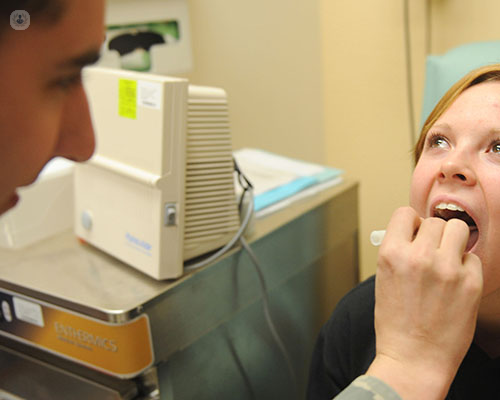Pharyngitis
Mr Kiran Varad - Otolaryngology / ENT
Created on: 11-13-2012
Updated on: 04-18-2023
Edited by: Carlota Pano
What is pharyngitis?
Pharyngitis, or a sore throat, is the inflammation of the pharynx, which is located between the tonsils and the larynx, at the back of the mouth. It is characterised by a scratchy feeling and difficulty swallowing. Pharyngitis usually subsides within a week and is caused by a viral or bacterial infection. It causes a sore throat, fever, a rash, redness of the pharynx, swollen lymph nodes, a headache, and difficulty swallowing.
Most cases tend to occur during the colder months. The condition is contagious, and often spreads among family members and close contacts.

What are the symptoms of pharyngitis?
A sore throat is the main symptom of pharyngitis. Other symptoms include:
- A runny nose
- A fever
- A headache
- A cough
- Fatigue
- Muscle aches and joint pain
- Chills
- Swollen lymph nodes
- A rash
- Loss of appetite
- General malaise
What causes pharyngitis?
Pharyngitis is caused by either a virus or bacteria, such as:
- The common cold
- Influenza
- Mononucleosis
- Strep throat (caused by group A streptococcus)
The following are risk factors for developing pharyngitis:
- Exposure to colds and the flu (e.g. people with jobs in healthcare)
- Allergies
- Sinus infections
- Exposure to smoking
- Smoking
Can pharyngitis be prevented?
To prevent pharyngitis, you should avoid contact with those already infected. Some measures include:
- Avoid contact with sick individuals
- Avoid smoking
- Wash your hands often
- Don't share food or drinks with people
How is pharyngitis treated?
If the cause of the pharyngitis is viral, then home care is the main treatment. It is important to stay hydrated, eat well, gargle with warm, salty water and get lots of rest. Throat lozenges and over-the-counter painkillers can also help relieve any pain or discomfort.
If it is caused by a bacterial infection, antibiotics can be prescribed, commonly amoxicillin and penicillin.
